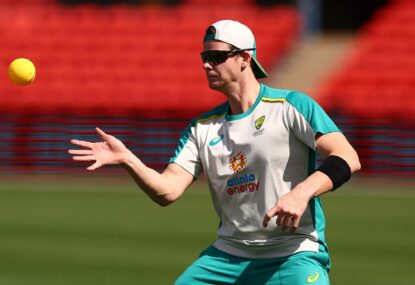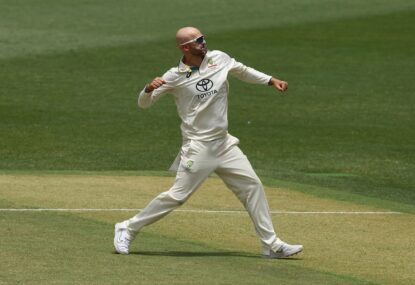Matth’s excellent Alphabet Australian teams and Alphabet Ashes series prompted thousands of responses, including suggestions to select teams by birth month or star sign, and subsequently that one’s prospects are better if born in one month rather than another.
Well, it turns out to be a real thing. Various academics and journalists have investigated a variety of sports including cricket, and found clear over-representation of those born in particular months. The theory proposes that someone born shortly after the cut-off date for age-based sport has a natural advantage. They can be anything up to 12 months older than a teammate, more physically mature, and receive more attention, opportunities and coaching. It’s called the Relative Age Effect, or RAE.
In both Australia and England, the cut-off for youth cricket teams is generally 1 September. So if the RAE is valid, a relatively higher number of successful cricketers will have been born late in the calendar year, or very early. An analysis of the best-performed 600 of their 1153 Test players since 1877 supports the theory. October to December is the most common birth period for Australians, while six of England’s 26 highest-scoring batsmen were December babies.
As we face continuing lockdowns and social distancing, desperate times call for desperate measures.
So at the risk of jumping the team-selection shark, while simultaneously clutching at straws and acknowledging that it is impossible to compare champions from different eras, I offer you the Calendar Ashes.
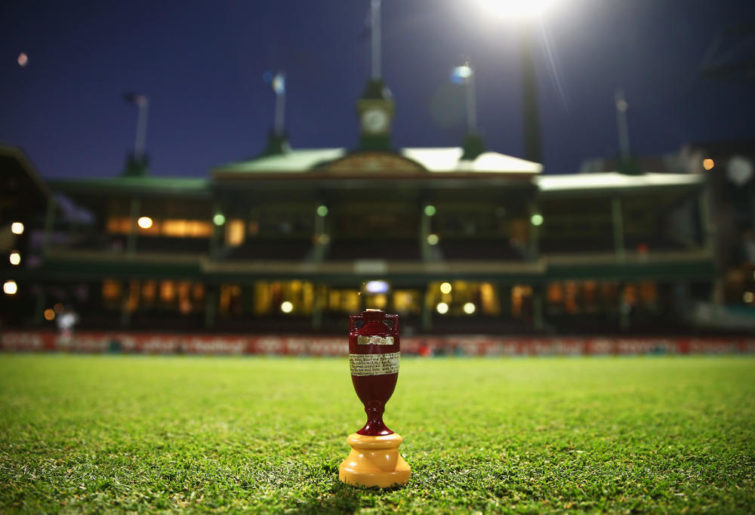
(Photo by Ryan Pierse/Getty Images)
Pairs of birth-based Australian and English teams will meet in two six-Test series, at appropriate venues and dates. For example, the December-born teams will play at the Melbourne Cricket Ground, commencing on Boxing Day.
The first series will take place in Australia, whose teams will enjoy home-ground advantage. The October to December teams are three of the very best, perhaps due in part to the Relative Age Effect. However, the England teams are very competitive, and in a two-horse race could even spring a few upsets.
Naturally, Dr Who and their TARDIS is handling all travel arrangements. The laws of time and space having been thus suspended, some dual internationals will appear for both countries, and in doing so play against themselves.
Finally, grateful acknowledgements to Neville Cardus, Cricinfo, Wisden and Wikipedia, among others.
Calendar Ashes, First Test, The Gabba, October
Match preview
These are two very strong XIs, but Australia enjoy a 12 win-four loss record over England at the Gabba, commencing with the Bodyline Test of 1932-33. They have a more accomplished line-up that bats all the way down to 11, including four Queenslanders. England’s team includes two South Africans, an Australian, a Scotsman, and some of the most popular and unpopular cricketers ever to have toured Down Under.
Australia October-born
Mark Taylor
104 Tests, 1989-1999, 7525 runs at 43.49, 19 centuries
Left-handed batsman, who will also occupy first slip and act as vice-captain. His highest score was an undefeated 334, against Pakistan in Peshawar… in October.
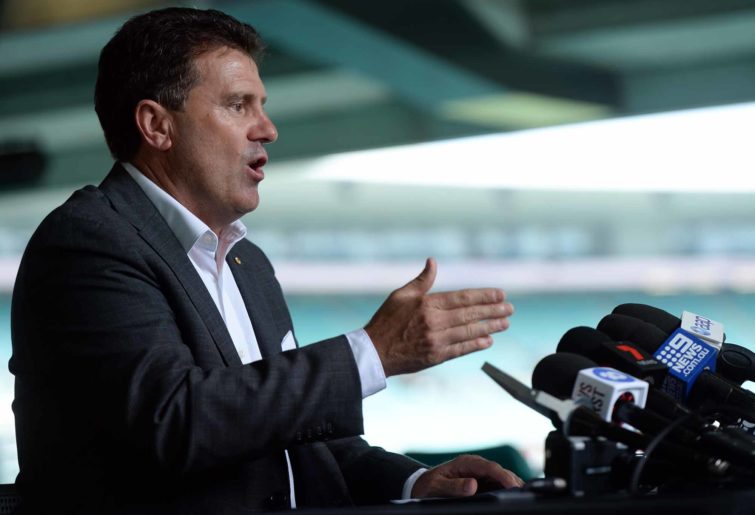
(AAP Image/Carol Cho)
Matthew Hayden
103 Tests, 1994-2009, 8625 runs at 50.73, 30 centuries
Left-handed batsman, who will field in the slips and gully. Scored four of his centuries at his home ground the Gabba. Highest score of 380 against Zimbabwe at the WACA… in October.
Neil Harvey
79 Tests, 1948-1963, 6149 runs at 48.42, 21 centuries
Left-handed batsman who scored six centuries in his first 13 innings. Also a brilliant fieldsman. His Gabba centuries included 164 versus England in 1954/55. Debuted at the age of 19. Selected in the Australian Cricket Board’s official Test Team of the 20th Century.
Bill Ponsford
29 Tests, 1924-1934, 2122 runs at 48.22, seven centuries
Scored a world-record 429 in only his fourth first-class innings, and centuries in each of his first two Tests. In England in 1934, he and Bradman shared 388-run and 451-run partnerships. Averaged 65.18 in first-class cricket, and 83.27 in the Sheffield Shield, despite being colour-blind. Retired at only 34 years of age.
David Warner
84 Tests, 2011-, 7244 runs at 48.94, 24 centuries
Left-hander and averages 65.94 on home soil, with a triple-century against Pakistan. Four centuries at the Gabba to date. Unfortunately, off-field scandals have tarnished his reputation. If this match was in England, Brian Booth would replace him.
Billy Murdoch (wicketkeeper)
19 Tests, 1877-1892, 908 runs at 31.31, two centuries, 14 catches, one stumping
Debuted in the second Test ever played. A highest score of 211, at the Oval in 1884. Arguably the finest 19th-century batsman after WG Grace. Played for both countries. Died while at the MCG, watching a Test.
Richie Benaud (captain)
63 Tests, 1952-1964, 2201 runs at 24.45, three centuries, 248 wickets at 27.03
One of the greatest of all captains, and an attacking batsman and brilliant fieldsman. Also a match-winning leg-spinner, whose specialty was the flipper. Arguably the most influential cricket personality of the past 75 years.
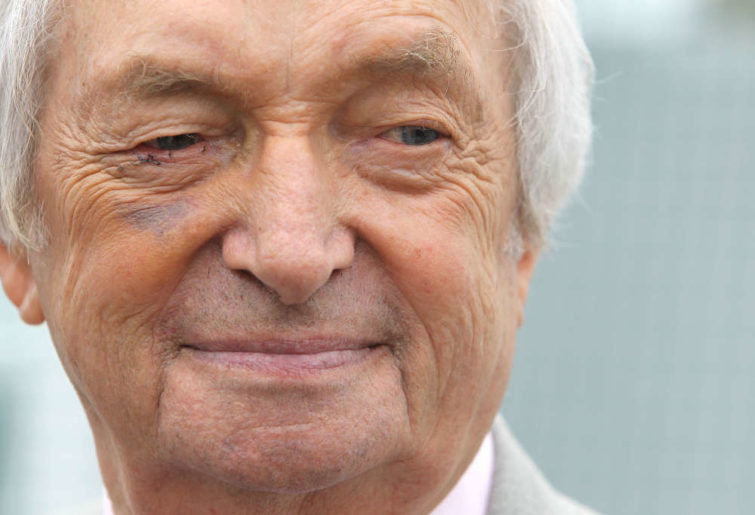
(AAP Image/Sergio Dionisio)
Ron Archer
19 Tests, 1953-1956, 713 runs at 24.58, one century, 48 wickets at 27.45
Useful batsman and swing bowler. Opening the bowling against England at Headingley in 1956, he took three wickets for three runs from his first nine overs. Debuted at 19 years of age, but at 23 suffered a career-ending ACL injury in a Test in Karachi. Member of Queensland’s Team of the Century. Later an ICC match referee.
Ray Lindwall
61 Tests, 1946-1960, 1502 runs at 21.15, two centuries, 228 wickets at 23.03
Fast bowler with late swing and impeccable control, who bowled more than 40 per cent of his victims, and spearheaded the Invincibles in 1948. Career shortened by World War Two, which only ended when he was already 24 years of age. Captained Australia once, and was a more than capable batsman. A New South Welshman, who later moved to Queensland.
Ryan Harris
27 Tests, 2010-2015, 603 runs at 21.53, 113 wickets at 23.52
Fast bowler who debuted relatively late at 29 years of age, and regular injuries affected his subsequent availability. Sydney-born and Adelaide-bred, and gained Test selection only after moving to Queensland.
Tony Dodemaide
Ten Tests, 1987-1992, 202 runs at 22.44, 34 wickets at 28.02
Fast-medium bowler, who scored 50 and took 6-58 on debut, but did not achieve such figures again.
Honourable mentions: Brian Booth, Bob Cowper, Damien Martyn, Graham Yallop, Adam Voges, Brad Haddin, Mick Malone, Bob Holland, Doug Ring, Nathan Hauritz.
England October-born
Michael Vaughan (captain)
82 Tests, 1999-2008, 5719 runs at 41.44, 18 centuries
On debut in South Africa, scored 33 after his side had been reduced to four wickets for two runs. In Australia in 2002/03, scored 633 runs at 63.30, with three centuries. In 2005, became the first Ashes-winning England captain since 1986/87.
Geoff Boycott
108 Tests, 1964-1982, 8114 runs at 47.72, 22 centuries
Perfect technique, and in Australia in 1970/71 he scored 657 runs at 93.85. England lost only 20 matches in which he played. Would have had an even greater record, had he not made himself unavailable for 30 Tests during the course of his career.
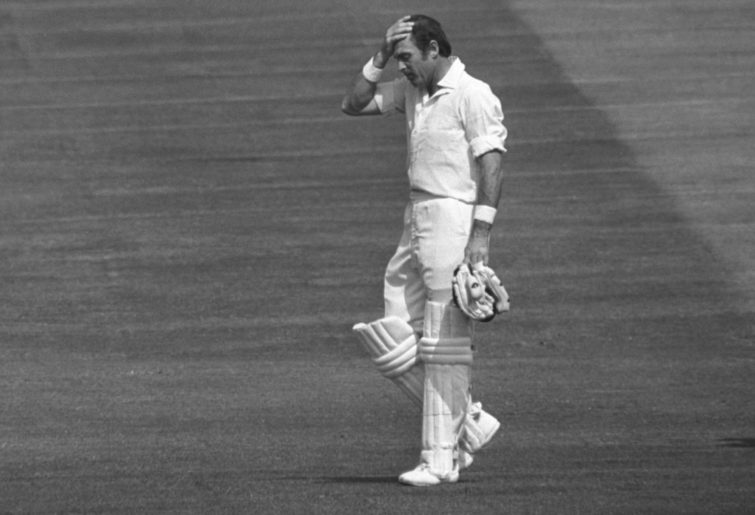
(S&G/PA Images via Getty Images)
CAG (Jack) Russell
Ten Tests, 1920-1923, 910 runs at 56.87, five centuries
An excellent on-side player and slip fieldsman, and the first English batsman to hit a century in each innings. Scored a century in his first match against Australia, and three against them in total. His opportunities were affected by World War One, which commenced when he was 26 years of age.
Basil D’Oliveira
44 Tests, 1966-1972, 2484 runs at 40.06, five centuries, 47 wickets at 39.55
His 158 against Australia in 1968 and subsequent selection to tour his native South Africa as a so-called Cape Coloured led to its cancellation, contributing to that country’s 20-year isolation from cricket. After migrating at 25 years of age, he then did not gain selection until he was 34. His miserly medium-paced swing bowling adds to this team’s balance.
Douglas Jardine
22 Tests, 1928-1934, 1296 runs at 48.00, one century
Captained England to a 4-1 victory in the Bodyline series, his second tour of Australia. Equally loved by his teammates and hated by Australian spectators. Scored his only century in 1933, against a West Indies attack using Bodyline theory. Just edges out Colin Milburn for a place in this team.
Tony Greig
58 Tests, 1972-1977, 3599 runs at 40.43, eight centuries, 141 wickets at 32.20
A complete cricketer as captain, batsman, fieldsman, and when bowling either medium pace or off spin. Career highlights included 13-156 against the West Indies in 1973/74, and 110 against Dennis Lillee and Jeff Thomson in Brisbane in 1974/75. After migrating from South Africa, he did not debut until the age of 25. His captaincy and career ended at 30, on signing for World Series Cricket and recruiting others to do the same.
Billy Murdoch (wicketkeeper)
19 Tests, 1877-1892, 908 runs at 31.31, two centuries, 14 catches, one stumping
Debuted in the second Test ever played, and captained three tours to England. A highest score of 211 at the Oval in 1884. Arguably the finest 19th-century batsman after WG Grace. Played for both countries. Died while at the MCG, watching a Test.
Wilfred Rhodes
58 Tests, 1899-1930, 2325 runs at 30.19, two centuries, 127 wickets at 26.96
One of England’s finest left-arm spinners and all-rounders. In his debut at 21 years of age, he batted at 11. In 1903/04, he took 31 wickets against Australia, including 15-124 at the MCG. In 1911/12, he and Jack Hobbs shared a 323-run opening partnership at the MCG. World War One interrupted his career, when he was at his peak. Recalled at the age of 49, he had match figures of 6-79 in a series-winning defeat of Australia in 1926, and played his final Test at the age of 52. His 4187 wickets in first-class matches will never be surpassed.
Johnny Briggs
33 Tests, 1884-1899, 815 runs at 18.11, one century, 118 wickets at 17.74
Left-arm spinner, dangerous batsman and capable fieldsman. Toured Australia six times, but bowled only eight overs in his first six Tests. Against Australia at Lord’s in 1886, he took 5-29 and 6-45. Against South Africa in Cape Town in 1889, he took 7-17 and 8-11. He was an epileptic who suffered a seizure during a Test in 1899, and died at 39 years of age in Cheadle Asylum.
John Snow
49 Tests, 1965-1976, 202 wickets at 26.66
England’s best fast bowler of the ‘60s and ‘70s. In Australia in 1970/71, he took 31 wickets at 22.83, and sparked a team walk-off at the SCG after being accosted by a spectator for hitting Terry Jenner with a bouncer.
Steve Harmison
63 Tests, 2002-2009, 226 wickets at 31.82
A fast bowler whose highlights included 7-12 against the West Indies in 2003/04, the final wicket in the famous two-run defeat of Australia in 2005, and 11-76 against Pakistan in 2006. The first delivery of the 2006/07 Ashes series, which ended up at second slip, was a low light.
Possible tour party members: Colin Milburn, Sir Pelham Warner, Jim Parks Jnr, George Ulyett, Mike Hendrick, Peter Loader, David Allen, Len Braund, Bernard Bosanquet.






































































































